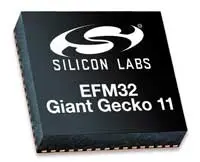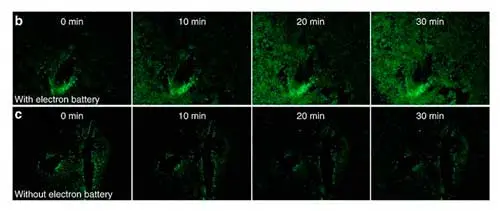Electronics News
Archive : 31 July 2017 год
.webp) A way to write an electrical circuit into a crystal which could enable transparent, 3D electronics that can be erased and reconfigured has been found by Washington State University physicists.
A way to write an electrical circuit into a crystal which could enable transparent, 3D electronics that can be erased and reconfigured has been found by Washington State University physicists.
By using a laser to etch a line in the crystal and attaching electrical contacts at each end of the line, the researchers managed to create a current.
"It opens up a new type of electronics where you can define a circuit optically and then erase it and define a new one," said Professor Matt McCluskey. "It's exciting that it's reconfigurable. It's also transparent. Invisible electronics could be possible where a circuit is etched on a window or something like that.”
According to the team, a crystal does not ordinarily conduct electricity but when the crystal strontium titanate is heated under the right conductions, it is altered so light will make it conductive. The phenomenon, called ‘persistent photoconductivity’, also occurs at room temperature.
The researchers surmise that heat forces strontium atoms to leave the material, creating light-sensitive defects responsible for the persistent photoconductivity. Their recent work is said to increase the crystal's conductivity 1000-fold, which can last up to a year.
"We look at samples that we exposed to light a year ago and they're still conducting," said Prof McCluskey. "It may not retain 100% of its conductivity, but it's pretty big."
Moreover, the circuit can be by erased by heating it on a hot plate and recast with an optical pen.
"It's an Etch A Sketch," said Prof McCluskey. "We've done it a few cycles. The next engineering challenge would be to do that thousands of times."
Author
Peggy Lee
Source: www.newelectronics.co.uk
 Silicon Labs has expanded its EFM32 Gecko MCU portfolio with the addition of devices offering higher performance, more features and lower power consumption.
Silicon Labs has expanded its EFM32 Gecko MCU portfolio with the addition of devices offering higher performance, more features and lower power consumption.
The EFM32GG11 Giant Gecko MCU family is said to offer the most advanced feature set available in the low-power MCU market, targeting smart metering, asset tracking, industrial/building automation, wearables and personal medical applications. The ARM Cortex-M4 based MCUs run at up to 72MHz and offer a range ofmemory options, peripherals and hardware accelerators.
Parts are available with up to 2Mbyte or flash and 512kbyte of RAM, as well as with SD/MMC and Octal/Quad-SPI memory interfaces. Consuming 77μA/MHz in active mode and 1.6μA in deep sleep mode, the MCUs are supplied with a 10/100 Ethernet MAC and an SDIO Wi-Fi interface. Single or dual CAN bus controllers can be specified and there is also a crystal-free USB controller.
Giant Gecko MCUs are available in a range of QFN, QFP and BGA packages with up to 192 pins. Many of the new additions are said to be footprint-compatible with existing EFM32 MCUs.
Author
Graham Pitcher
Source: www.newelectronics.co.uk
 Engineers at the University of Maryland claim to have invented a bio-compatible battery which produces the same kind of ion-based electrical energy that flows in humans and other living things.
Engineers at the University of Maryland claim to have invented a bio-compatible battery which produces the same kind of ion-based electrical energy that flows in humans and other living things.
In traditional batteries, the electrical energy, or current, flows as moving electrons. This current of electrons out of the battery is generated within the battery by moving positive ions. The ion current battery however moves electrons around in the device to deliver energy that is a flow of ions.
According to the researchers, this is the first time that an ionic current-generating battery has been invented.
"In a typical battery, electrons flow through wires to interface electronics, and ions flow through the battery separator,” said Professor Liangbing Hu. “In our reverse design, a traditional battery is electronically shorted so the electrons flow through the metal wires. The ions then have to flow through the outside ionic cables.

The green fluorescent images of calcium waves produced in HEK293 cells (b) with and (c) without ionic current stimulation at different time intervals.
According to the team, potential applications include devices to micro-manipulate neuronal activities and interactions that can prevent and/or treat such medical problems as Alzheimer's disease and depression; medical devices for the disabled; more efficient drug and gene delivery tools; and direct machine and human communication.
"My intention is for ionic systems to interface with human systems," Prof Hu added.
To make the battery, the team soaked blades of Kentucky bluegrass in lithium salt solution. The channels that once moved nutrients up and down the grass blade were ideal conduits to store energy.
"The microchannels in the grass can hold the salt solution, making them a stable ionic conductor," said graduate student Chengwei Wang.
However, the team plans to diversify the types of ionic current electron batteries they can produce. "We are developing multiple ionic conductors with cellulose, hydrogels and polymers," said Wang.
Author
Peggy Lee
Source: www.newelectronics.co.uk
